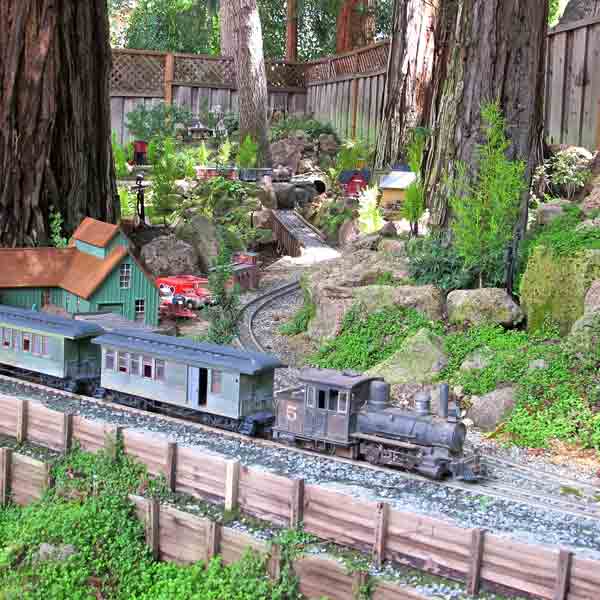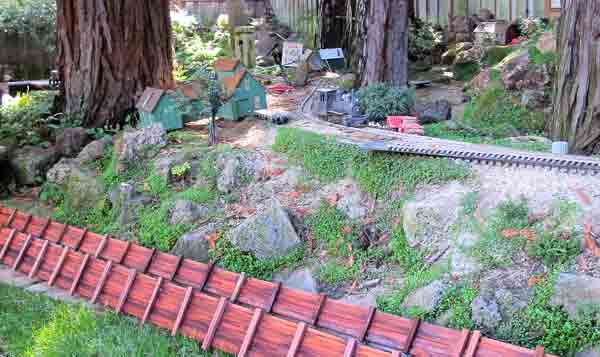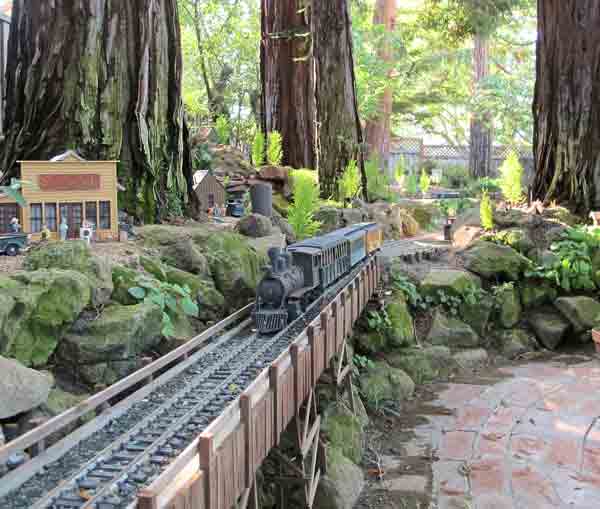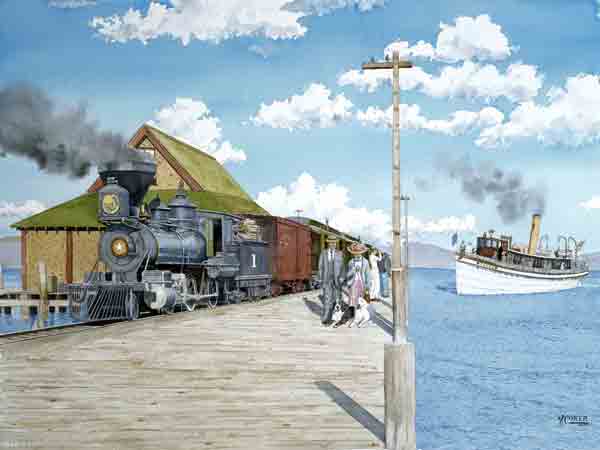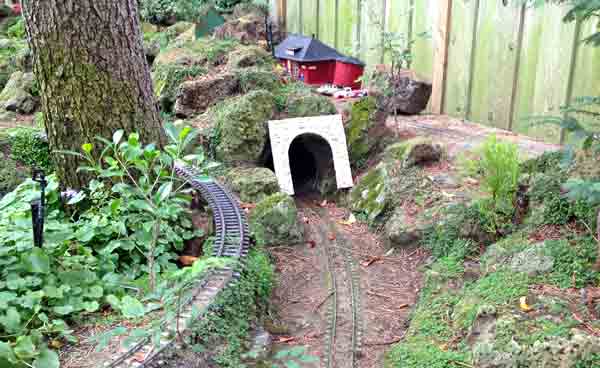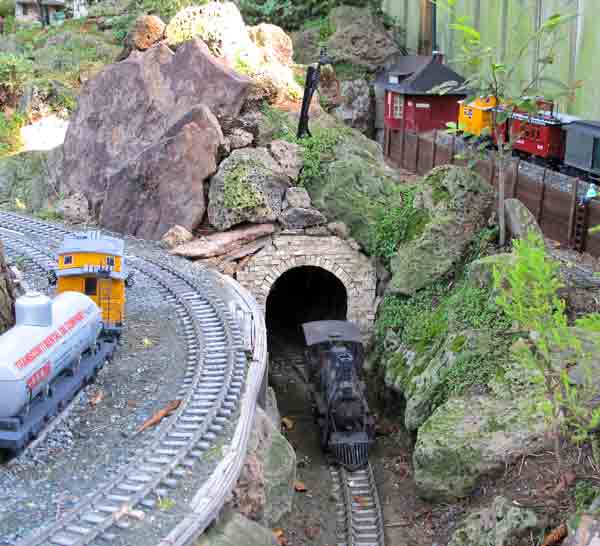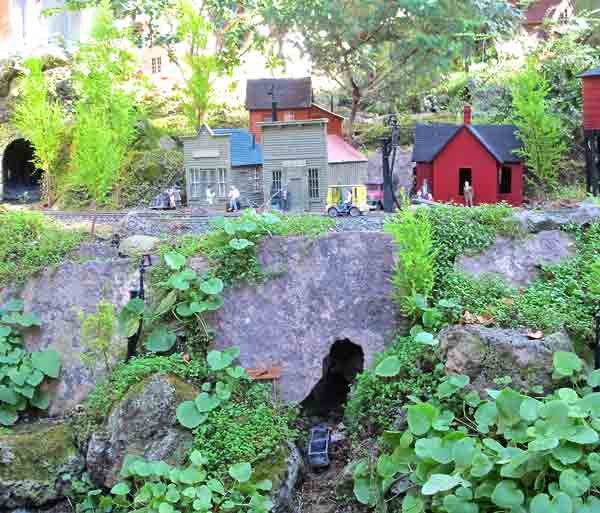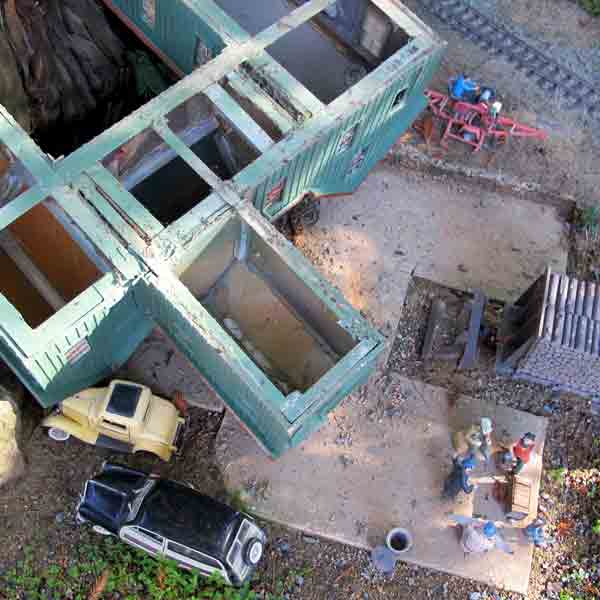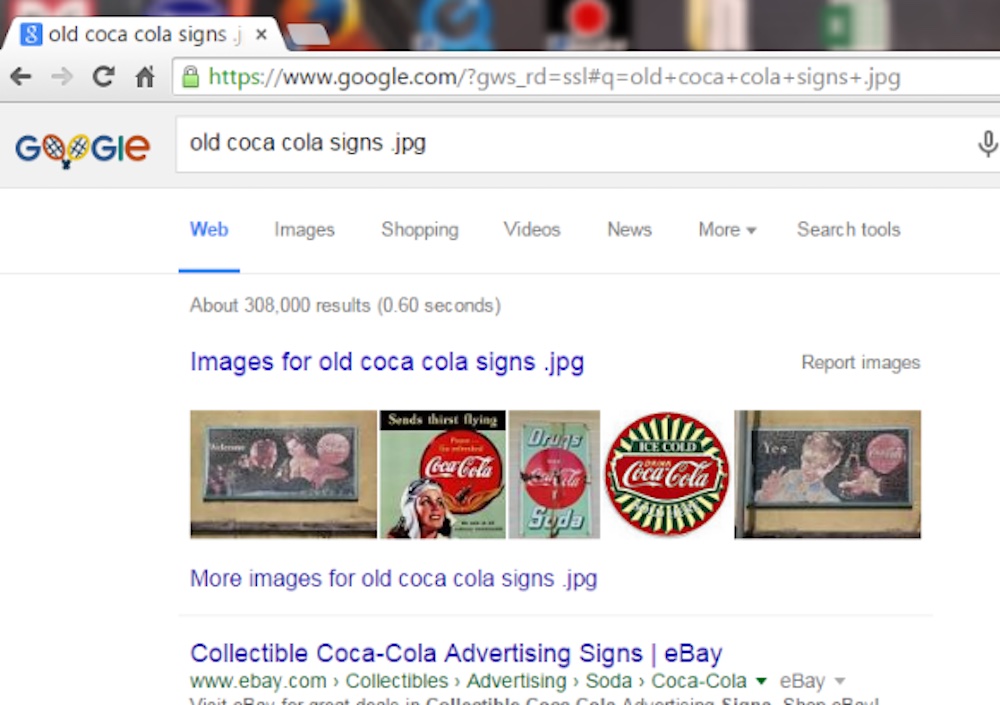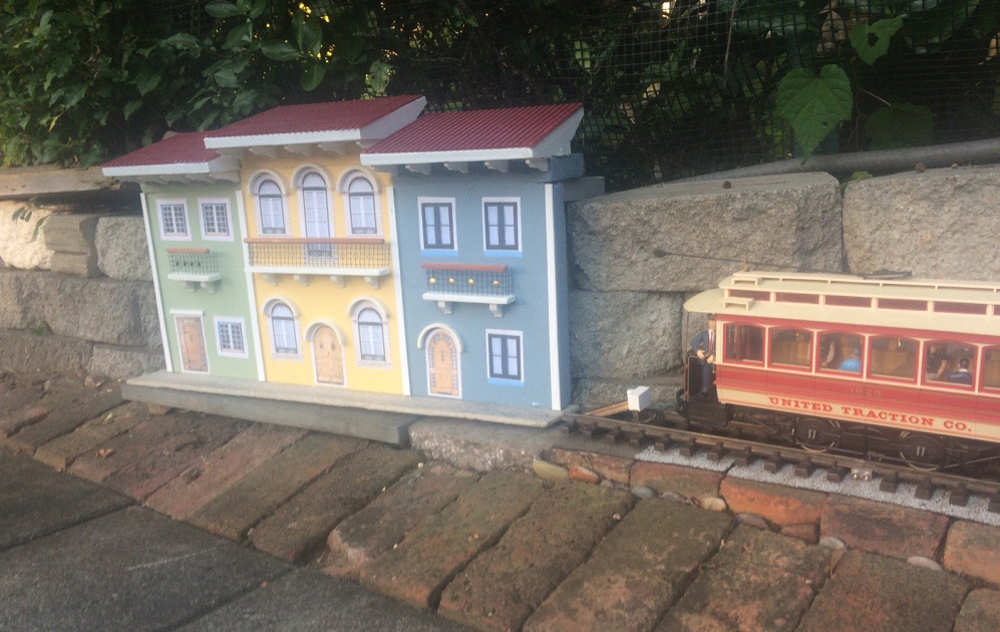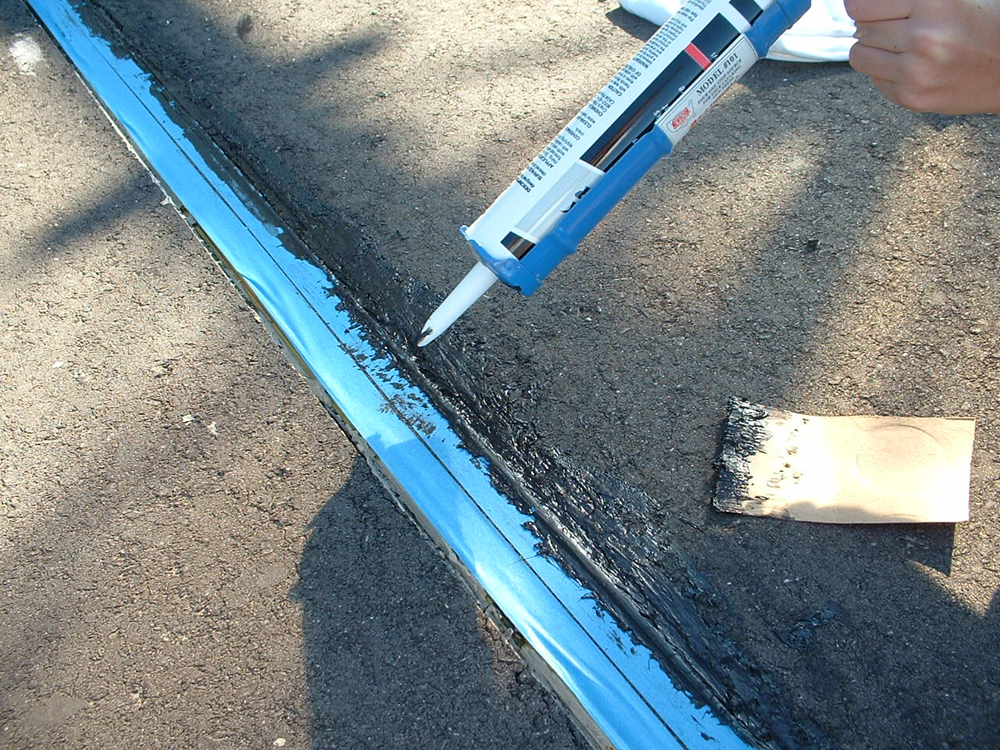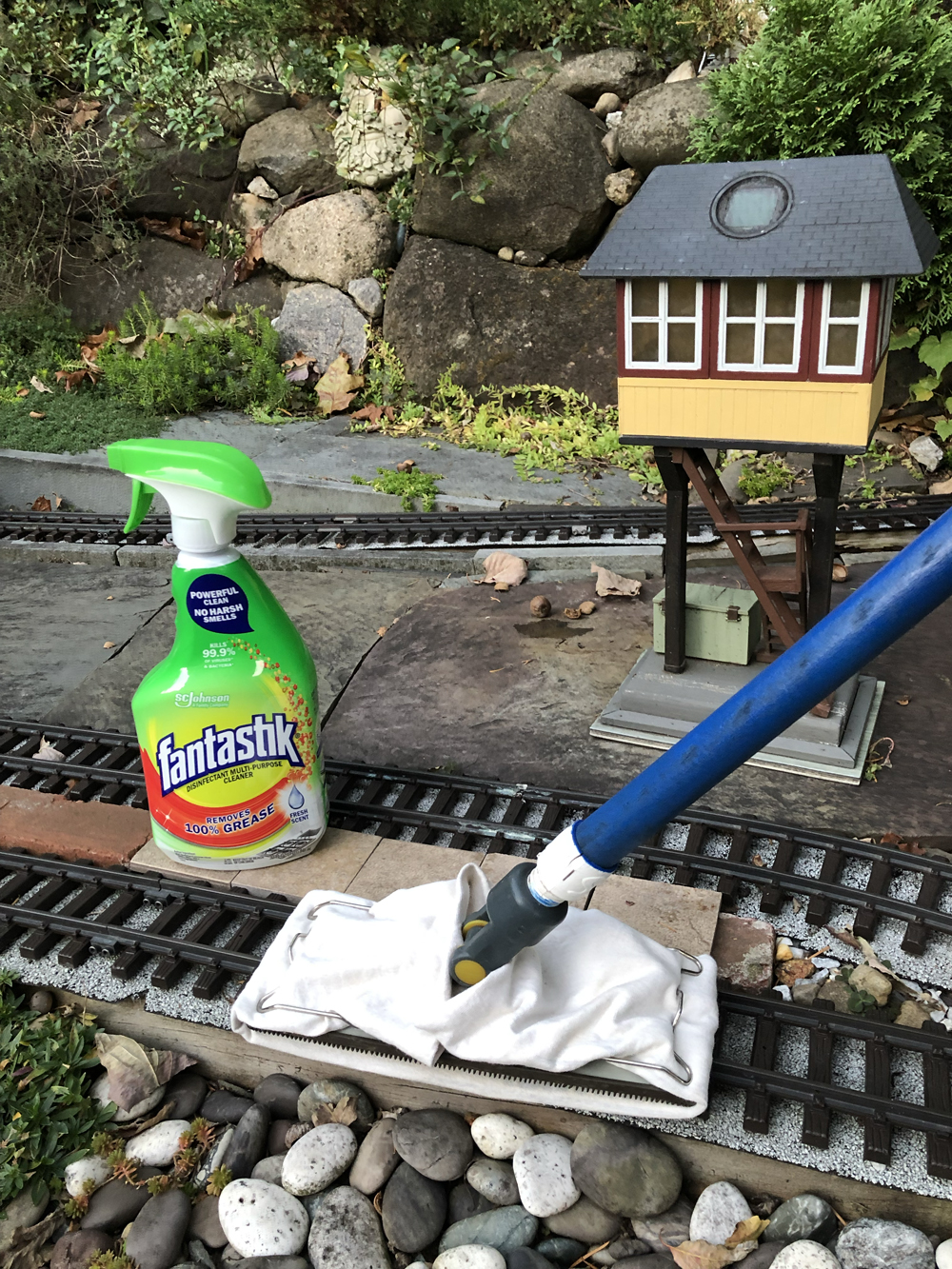After 18 years of service, Don and Sue Watters’ Lake Tahoe & Truckee railroad needed a major overhaul. Running trains had become difficult because years of fixes here and there created trackwork problems down the line. Don enlisted my grandson Lake Phillips and me to refurbish all aspects of the railway (photo 1). Before getting started, though, we took “before” pictures (photos 2 and 5) to identify necessary improvements.
Growing pains
Don outlined the issues and together we proposed solutions:
• Give in to the widening redwood trees by rerouting roadbed
• Refit and lower the track by excavation for easier curves and grades
• Terrace the space of certain slopes with scale retaining walls, one of which would accommodate a steamup siding
• Install more railroad scenes for non-run days, with several new sidings to show off rolling stock
• Prevent human accidents on raised beds with access steps
• Improve plantings with more of what works in shade
• Renovate and reinforce buildings, then reconstruct towns
• Increase scenes that depict the historical Lake Tahoe area, as seen in books
Retaining wall renewal
One 10′-long retaining wall (actually two pressure-treated boards fastened one behind the other) solved multiple problems (photo 1). The “before” shot (photo 2), shows no room for a steamup siding. We first removed all but the bottom row of boulders and several long, thick roots that had lifted the roadbed. Installing the wooden retaining walls brought the siding much closer for reaching live-steam trains. (For instructions, see “Build stronger retaining walls,” August 2012 GR.)
More land in front gives the distant mountain town of Squaw Valley a grander footing, with tree-planting territory befitting the Sierras it models. Lowering this area created opportunities down the line, as seen in the distance of photo 1, where a long bridge spans a valley.
Steel for spanning
Our favorite way of building a single span, 10′ bridge (where underneath support will be negligible) is to use a base of steel studs. They’re strong enough for building 1:1 hospitals, so the guys at the construction-materials store laugh at me when they hear I’m using them for model trains, but falling branches won’t harm them much. In photo 3, the redwoods had widened their trunks and pushed the track off the raised bed. Rather than build roadbed on the stacked-boulder slope, we spanned the curved wall and let the newly added town of Martis Landing take over the old track area.
Because we’re modeling a historic wooden bridge, we glued and screwed a base of redwood 1 x 4 x 10s onto the flange/sides of the 16-gauge steel piece. Then we brad-nailed and Titebond-glued scale lumber vertically to that board. To enhance the wooden look of his creation, Lake added trestle bents underneath, which don’t actually add function. The same goes for the cribbing on either end—it’s just for looks, but the wooden railings may be needed as trains enter from a curve with a switch on that end.
Restoring track
Long ago, Don had upgraded all his locomotives to battery power, one of which pushes Earl Martin’s track-sweeper car to clear the track of redwood leaves, a huge savings of time and effort. Yet, the trees drip sap on the rails and irrigation leaves salts, causing corrosion. Much of the LGB brass-rail flex track was temporarily removed to repair the railway. In spite of the years, the track was still serviceable but in need of maintenance.
The UV-resistant ties did in fact resist the sun’s effects but most sections had dangling or missing ties where the tie plates had become “un-spiked,” probably from being stepped on. No longer would the ties slide on the rails, as they did 18 years ago. Cement-like corrosion between ties had to be scraped off an inch at a time. For this I used a titanium honing tool that I like for cleaning and sharpening my steel pruner blades. It worked but was tedious, and I would welcome suggestions for an alternative method. For an exhaustive treatise on how to fix up used track, read Paul D. Race’s blog “Refurbishing Garden Railroad Track” at http://familygardentrains.com/primer/maintenance/track_refurb/track_refurb.htm
Understanding history
Don did his homework when planning his railroad. He laid out the Sierra towns sequentially, most depots labeled with their historic names. He examined bridge prototypes, trains, and other details in books with old photos of real places, back in the heyday of train transport through this rustic area of California.
Don was inspired by the painting in photo 4, which appears on the rear cover of Rails Around Lake Tahoe: Steam Trains and Steamboats by Mallory Hope Ferrell. The “before” photo (photo 5) shows multiple problems, the fixing of which would create opportunities for more scale scenes. In the rear of the LT&T, the concrete-block retaining wall would be raised and turned into Lake Tahoe’s pier, with a famous (still standing) depot (photo 6).
“Gold in them thar hills” had to be modeled on the LT&T. Serendipity at the rock yard supplied the chipped flagstone for a small mine opening (photo 7). The row of vertical flagstones created new land just above for another siding and a wider-radius mainline through the mountain town of Brockway Summit. Whereas the Watters’ original Lake Tahoe & Truckee railroad was interesting in its own right, these new changes made it possible to run trains more frequently; and when they’re not running, the new settlements, structures, and sidings recreate the history.
Why did you refurbish your 18-year-old railway?
Don and Sue Watters
Los Altos, California, Zone 9
Early one Sunday, we hit the panic button. The roots of our giant backyard redwoods had upended the concrete-block retaining wall that supports the rear of our railroad. The wall was about to knock down the wooden fence separating our yard from the one next door. First, we warned the neighbors. Next, we crossed our fingers and hoped that the fence would hold for the rest of the day: we and our Lake Tahoe & Truckee railroad (LT&T) were scheduled to host the Bay Area Garden Railway Society’s (BAGRS) Annual Summer Picnic for the first time.
Right-of-way and civil engineering
The fence survived the picnic! We brought in a contractor to rebuild the retaining wall so that this problem would not occur again. Fixing the redwood root problem required re-engineering of the turnaround loop at that end of the railroad, including day-lighting one tunnel under the town of Truckee (see Feb. 2015 GR, “Do over! Turning a tunnel into a canyon”).
While we were at it, we decided to scrape out the excess ballast from five remaining tunnels, increase the radius of the turnaround loop, and reduce the ruling grade to just over 2%. Nancy Norris was able to do this by constructing her trademark retaining walls, applying many days of elbow grease, and using a “magic” level to even out the grades. The resulting visual and operational improvements were so impressive that we decided to revamp the “Georgetown Loop” turnaround at the other end of the railway in a similar fashion, while leaving the original 12′ curved trestle intact.
Towns and buildings
These civil-engineering changes required us to downsize Truckee and the two small settlements along the line. We used the surplus buildings to create three other small communities along the railroad and we kitbashed four of them into a sawmill that we’d been talking about building for years.
We also decided to refurbish most of the buildings, which had been sitting outside year round for 18 years. We “soda blasted” a number of the larger, more complicated structures (along with most of our rolling stock), chemically removed paint from another handful, and scraped/sanded the rest. We used 1/2″ aluminum-angle stock and exterior-grade construction adhesive to “de-warp” the damage from years of sun and rain. New portals made of small, individual stone tiles (Lowes) glued to a styrene backing now dress up the entrances to the corrugated-plastic-pipe tunnels.
Looking back, looking ahead
The Lake Tahoe & Truckee was originally constructed in 1996 by Jack Verducci, Master Model Railroader, with the help of my wife Sue and me and several BAGRS volunteers. If you have the April 2003 Model Railroader, see my article about our garden railway, “The Old West outdoors.”
For our next project, we are thinking about rerouting the mainline at the front of the railway over the pond/patio to eliminate the problem of other redwood roots lifting and displacing the track and switches. We hope to complete this in time for the 2016 National Garden Railway Convention, which our club will be hosting.





